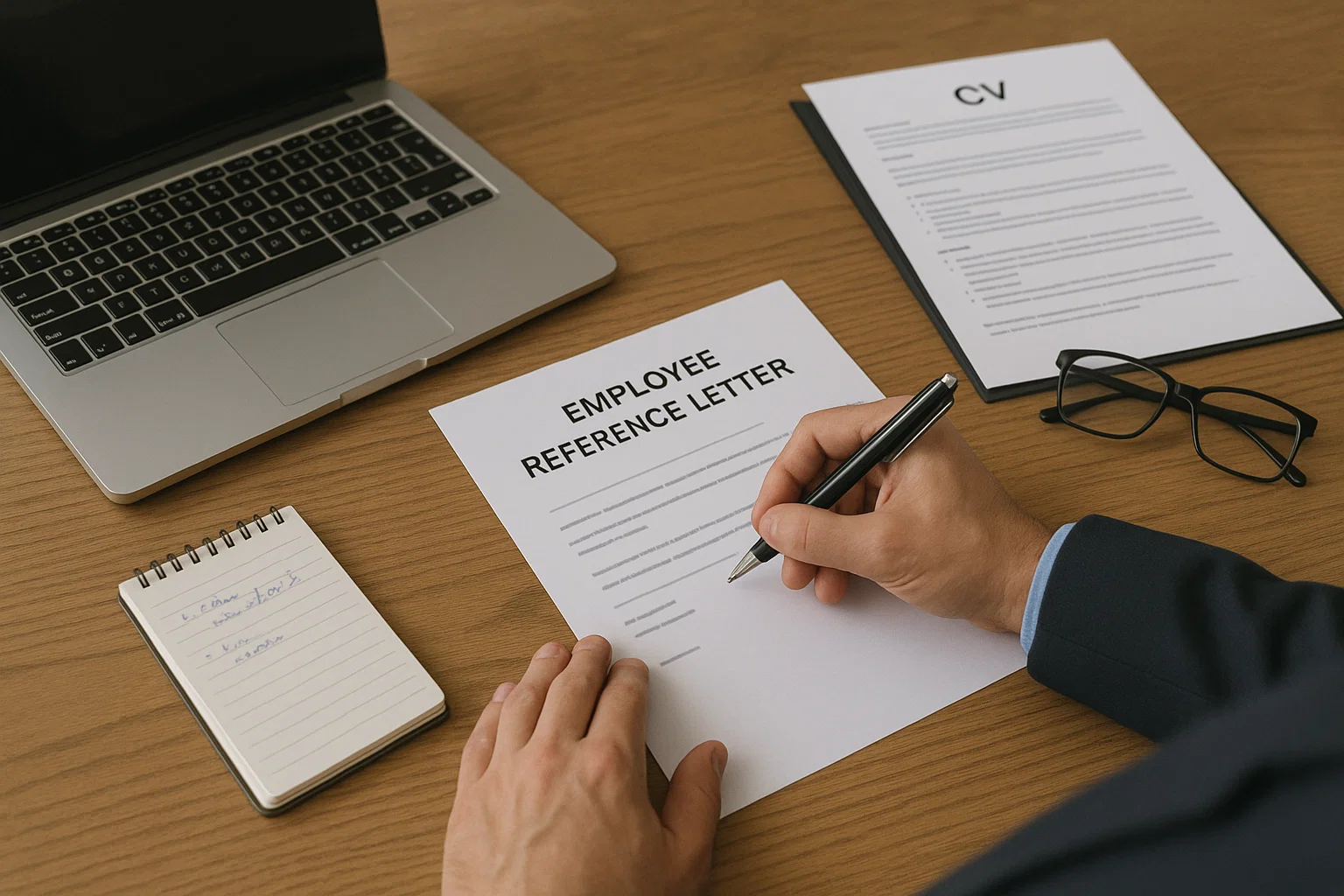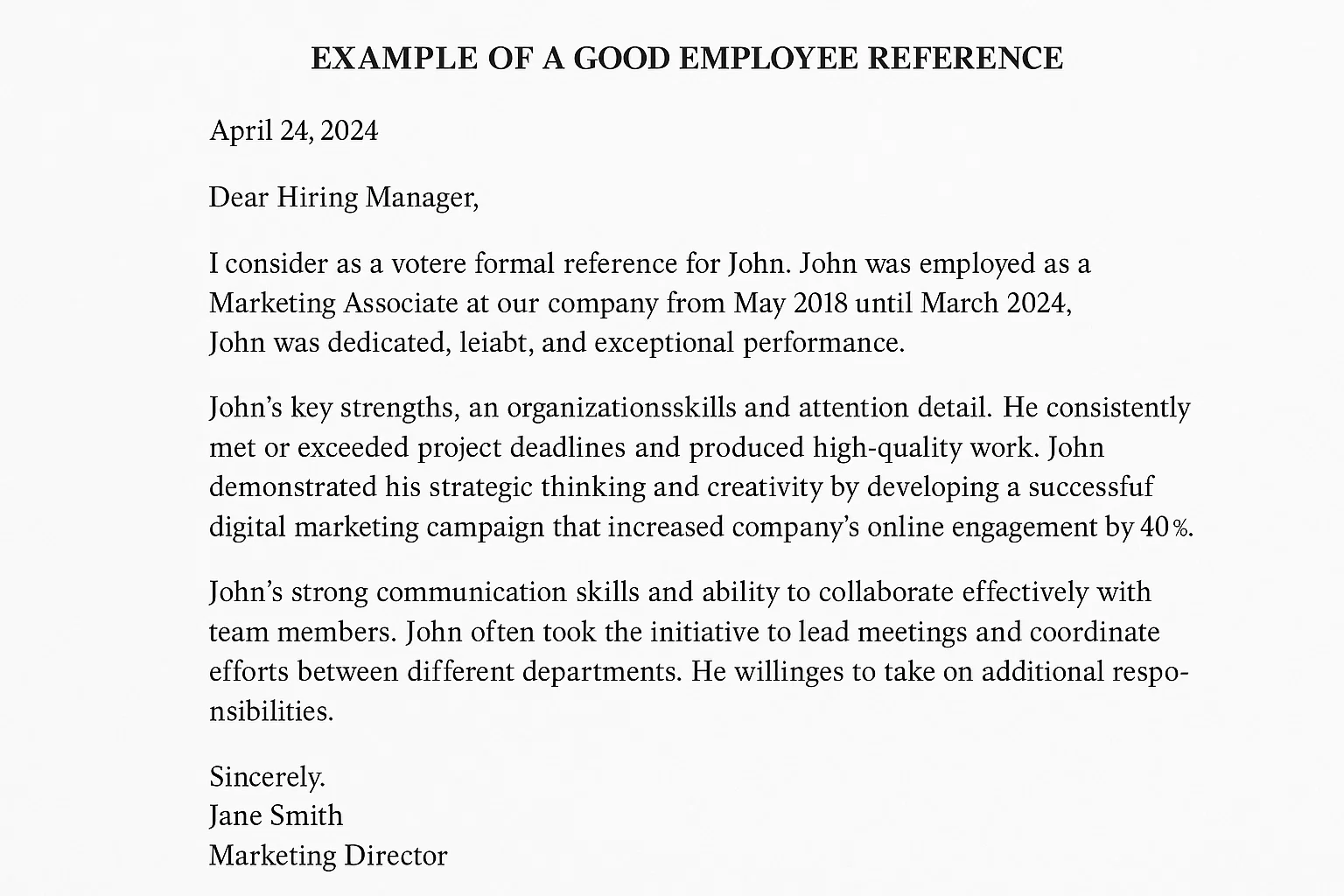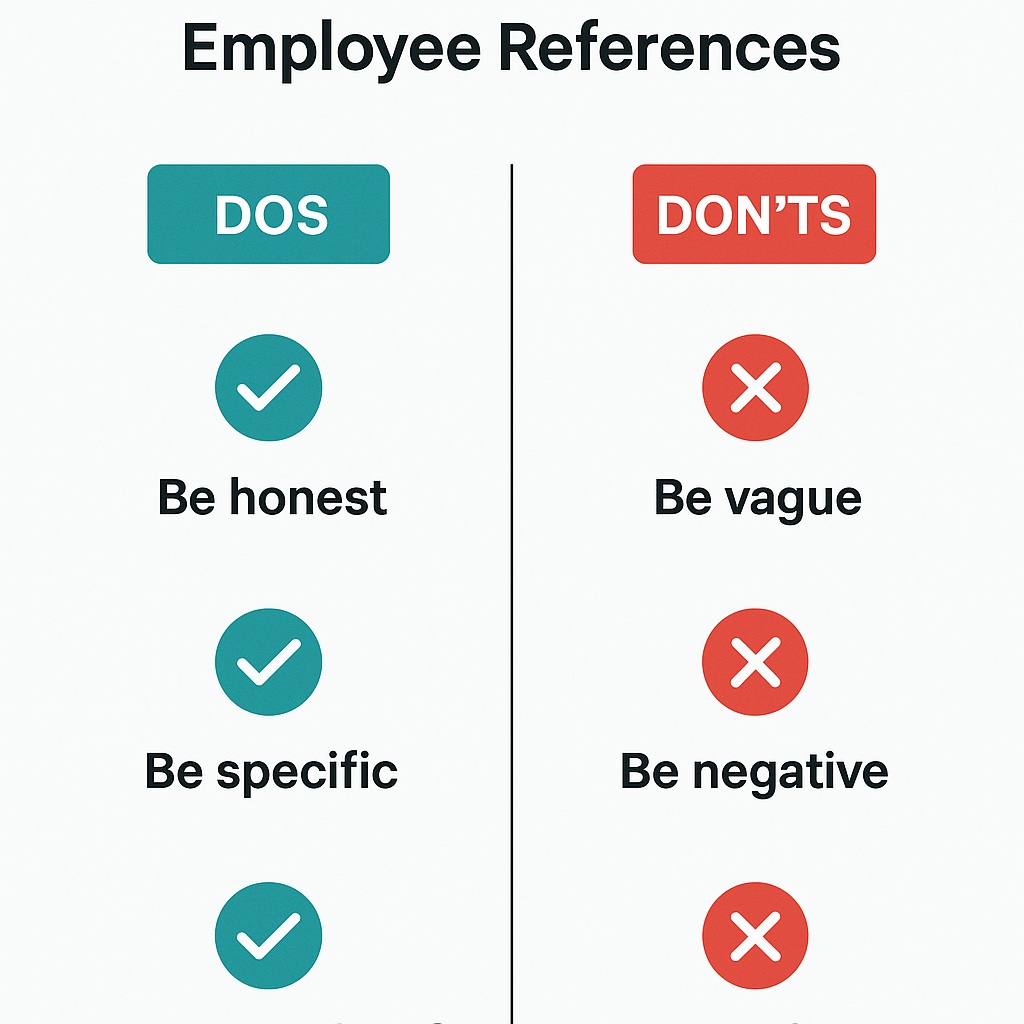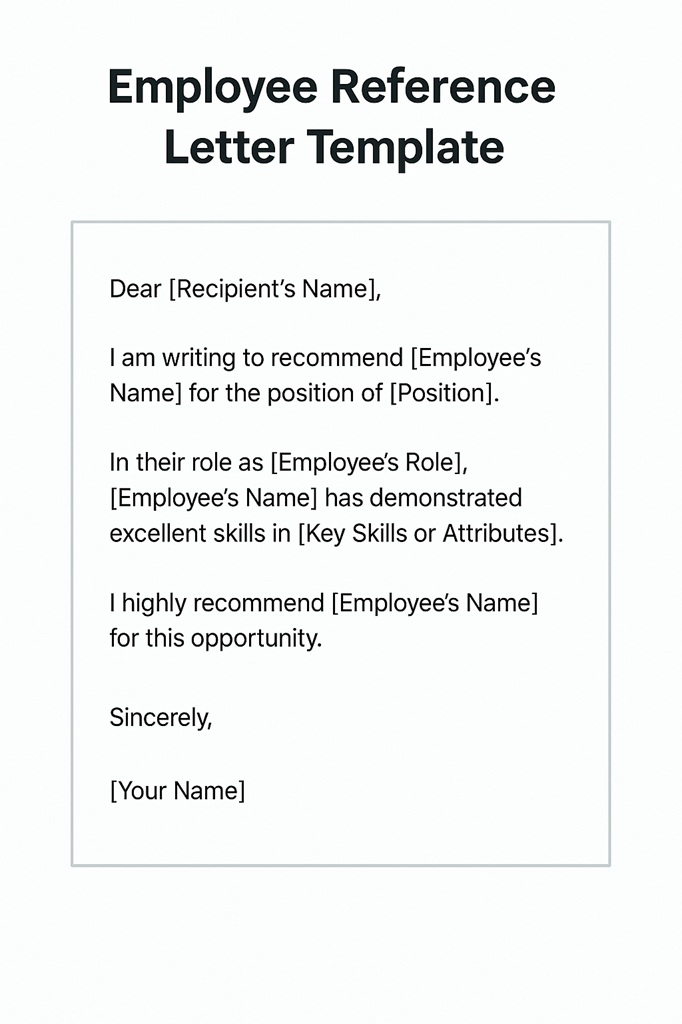Here’s the truth: writing a reference for an employee is less about perfect wording and more about credibility and clarity. It’s your chance to highlight their strengths in a way that convinces another employer they’re worth hiring. But it’s also about keeping it professional, fair, and relevant.
This guide will walk you through everything: what to include, examples you can copy, common mistakes to avoid, and even a ready-made template you can adapt. By the end, you’ll know exactly how to write a reference that’s useful, persuasive, and trustworthy.
What Is An Employee Reference?
An employee reference is basically your professional testimony about someone’s skills, behaviour, and performance at work. Think of it as a short spotlight on who they are as a worker.
There are two types you’ll usually write:
Professional reference – These focus on job performance, achievements, technical skills, and workplace behaviour.
Character reference – These are about personal qualities like reliability, honesty, or teamwork. They’re useful when someone doesn’t have much work experience (like interns or students) or when a company wants to check personality fit.
Both are important, but the professional reference tends to carry more weight in hiring decisions.
What Do You Write In An Employee Reference?
If you’re unsure where to start, break it down into four simple sections:
Introduction
Who you are and your relationship to the employee.
Example: “I worked with Maria as her direct manager at Global Tech for three years.”
Strengths & skills
Pick three to four qualities that made them stand out.
Example: leadership, communication, attention to detail, sales performance.
Examples to back it up
Stories or stats prove your point.
Example: “Under his guidance, the team improved efficiency by 20%.”
Closing recommendation
Make it clear you’d hire them again.
Example: “I strongly recommend her for any future role.”
Simple formula, but extremely effective.
What Is A Good Reference For An Employee Example?
Here’s a strong example you can learn from:
To Whom It May Concern,
I had the pleasure of working with Sarah Khan at BrightTech Solutions for three years, where she served as a project manager on our development team. During this time, Sarah consistently demonstrated exceptional leadership, organisation, and communication skills.
One of her standout achievements was leading a cross-departmental project that improved delivery times by 25%. Her ability to motivate colleagues while keeping deadlines on track was impressive.
Beyond her technical skills, Sarah brought a positive attitude that lifted team morale. She was the first to lend a hand when workloads piled up and always handled client interactions with professionalism.
I wholeheartedly recommend Sarah for any future role she pursues. Please feel free to contact me if further details are required.
Sincerely,
Oliver Bennett
Notice a few things:
It’s short and to the point (less than one page).
It uses specific achievements (25% improvement, cross-departmental leadership).
It’s written in a confident tone.
How To Give A Good Reference For An Employee
If you want your reference to carry weight, keep these principles in mind:
Be honest – Don’t exaggerate. A reference full of over-the-top praise feels fake.
Be specific – Details and examples stick. Saying “improved delivery times by 25%” is gold compared to “did well at work.”
Be relevant – Tailor it to the role they’re applying for. If they’re applying for a management role, highlight leadership and decision-making, not just technical skills.
Be professional – Even if you’re close with the employee, keep it formal. No jokes, no casual slang.
Different Styles Of References
Not every situation calls for the same type of reference. Let’s break it down.
1. Short and Simple Reference
Sometimes an employer just needs a quick confirmation:
This is to confirm that James Patel worked at Tech Solutions Ltd from January 2019 to March 2024 as a software developer. He was a reliable team member who consistently met deadlines and contributed to project success.
That’s all. Clean and minimal.
2. Detailed Professional Reference
This is the one most hiring managers prefer. It gives depth:
Role and responsibilities.
Specific examples of achievements.
Work ethic and character.
Recommendation.
3. Character Reference
Used when professional experience is limited:
I have known Ayesha for six years through community volunteering. She has shown consistent dedication, compassion, and organisational ability. She’s trustworthy and works well with people, making her an excellent candidate for roles requiring teamwork and empathy.
Mistakes To Avoid
Even well-meaning references can go wrong. Here are pitfalls to dodge:
Being too vague – “Hardworking” means nothing without proof.
Making it too long – Hiring managers don’t want essays. Keep it under one page.
Adding negative details – If you don’t have something positive to say, it’s better to decline writing the reference.
Copy-pasting templates – Employers can spot generic letters instantly. Add at least one personalised detail.
Forgetting your own details – Always include your name, role, and contact info.
Template You Can Reuse
Here’s a flexible template you can quickly adapt:
Dear [Hiring Manager’s Name],
I am writing to recommend [Employee’s Full Name], who worked with me at [Company Name] as a [Job Title] from [Start Date] to [End Date].
During this time, [First Name] consistently showed strengths in [Skill/Quality 1], [Skill/Quality 2], and [Skill/Quality 3]. A great example of this was when [short specific example].
[First Name] would be a valuable asset to any organisation thanks to their [key character traits]. I have no doubt they’ll excel in their next role.
Please feel free to contact me at [your email/phone number] for more information.
Yours sincerely,
[Your Name]
Frequently Asked Questions
What is a good reference for an employee example?
A good reference includes your relationship to the employee, their strongest skills, examples of achievements, and a clear recommendation.
What is a good example of a reference?
The best examples balance professional credibility with personal endorsement. Short, specific, and tailored is always better than generic.
What do you write in an employee reference?
Include job title, dates of employment, main duties, strengths, and one or two specific examples.
How to give a good reference for an employee?
Be honest, specific, and professional. Use active voice and include numbers or stories where possible.
Advanced Tips For Writing References That Impress
If you want to really stand out as a reference writer, here’s how to go the extra mile:
Match keywords to the job description – If you’ve seen the role they’re applying for, mirror the language. For example, if the role asks for “strong project management skills,” use that phrase in your letter.
Use metrics – Numbers make your recommendation solid. “Increased sales by 18%” has more weight than “boosted sales.”
Highlight soft skills – Employers don’t just hire for technical ability. Talk about communication, teamwork, and adaptability.
Offer availability – End by saying they can contact you for more details. It shows confidence in your words.
Real-Life Examples
Let’s run through two different scenarios to give you real flavour.
Example 1: Reference For A Sales Role
I worked with David at Horizon Retail where he consistently exceeded his sales targets. In 2023, he achieved 120% of his annual goal by introducing a customer loyalty scheme. His persuasive communication skills and deep product knowledge made him one of our top performers. I strongly recommend him for any sales position.
Example 2: Reference For A Graduate
I supervised Emma during her internship in our marketing department. She quickly learned complex tools like Google Analytics and contributed creative ideas that were used in campaigns. Her adaptability and eagerness to learn were impressive, and I believe she has strong potential in digital marketing.
Final Thoughts
Writing a reference for an employee doesn’t have to be stressful. Stick to the basics: clear introduction, strengths, proof, and a confident recommendation. Keep it honest, professional, and relevant to the role. Remember, your words could be the deciding factor in someone landing their dream job.
And if you’re ever stuck for writing inspiration or need help polishing your drafts, tools like Spinbot can give you a hand with rewriting, editing, and keeping your content crisp.
At the end of the day, think of it like this: you’re passing the torch. You’re helping shape the next chapter of someone’s career, and that’s a pretty powerful thing.

Oliver Bennett, with his Master’s degree from Manchester Metropolitan, is our in-house SEO specialist. At Spinbot UK Blog, he focuses on optimizing content to achieve the highest search engine rankings and edits articles to ensure they meet the highest standards of clarity and precision.



